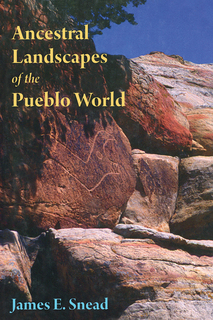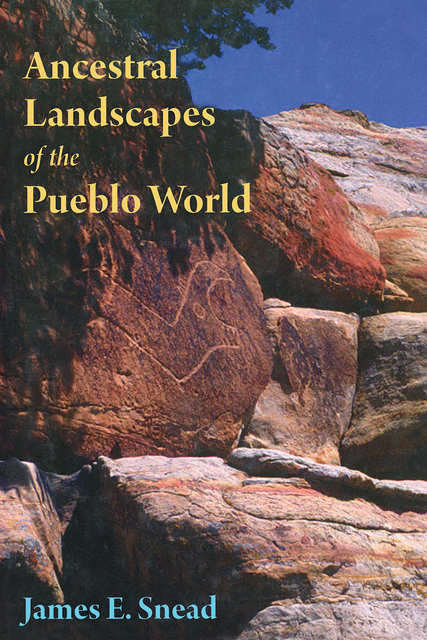Ancestral Landscapes of the Pueblo World
The eastern Pueblo heartland, located in the northern Rio Grande country of New Mexico, has fascinated archaeologists since the 1870s. In Ancestral Landscapes of the Pueblo World, James Snead uses an exciting new approach— landscape archaeology—to understand ancestral Pueblo communities and the way the people consciously or unconsciously shaped the land around them. Snead provides detailed insight into ancestral Puebloan cultures and societies using an approach he calls “contextual experience,” employing deep mapping and community-scale analysis. This strategy goes far beyond the standard archaeological approaches, using historical ethnography and contemporary Puebloan perspectives to better understand how past and present Pueblo worldviews and meanings are imbedded in the land. Snead focuses on five communities in the Pueblo heartland—Burnt Corn, T’obimpaenge, Tsikwaiye, Los Aguajes, and Tsankawi—using the results of intensive archaeological surveys to discuss the changes that occurred in these communities between AD 1250 and 1500. He examines the history of each area, comparing and contrasting them via the themes of “provision,” “identity,” and “movement,” before turning to questions regarding social, political, and economic organization. This revolutionary study thus makes an important contribution to landscape archaeology and explains how the Precolumbian Pueblo landscape was formed.
Texts
Published

Ancestral Landscapes of the Pueblo World
by James E. SneadPublished- This text has 0 annotations
- This text has 0 highlights
Metadata
- isbn978-0-8165-4964-1
- publisherUniversity of Arizona Press
- publisher placeTucson, AZ
- rightsCC BY-NC-ND 4.0
- rights holderUniversity of Arizona Press
We use cookies to analyze our traffic. Please decide if you are willing to accept cookies from our website. You can change this setting anytime in Privacy Settings.


